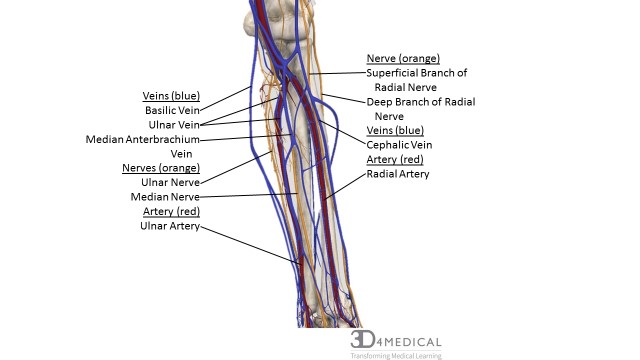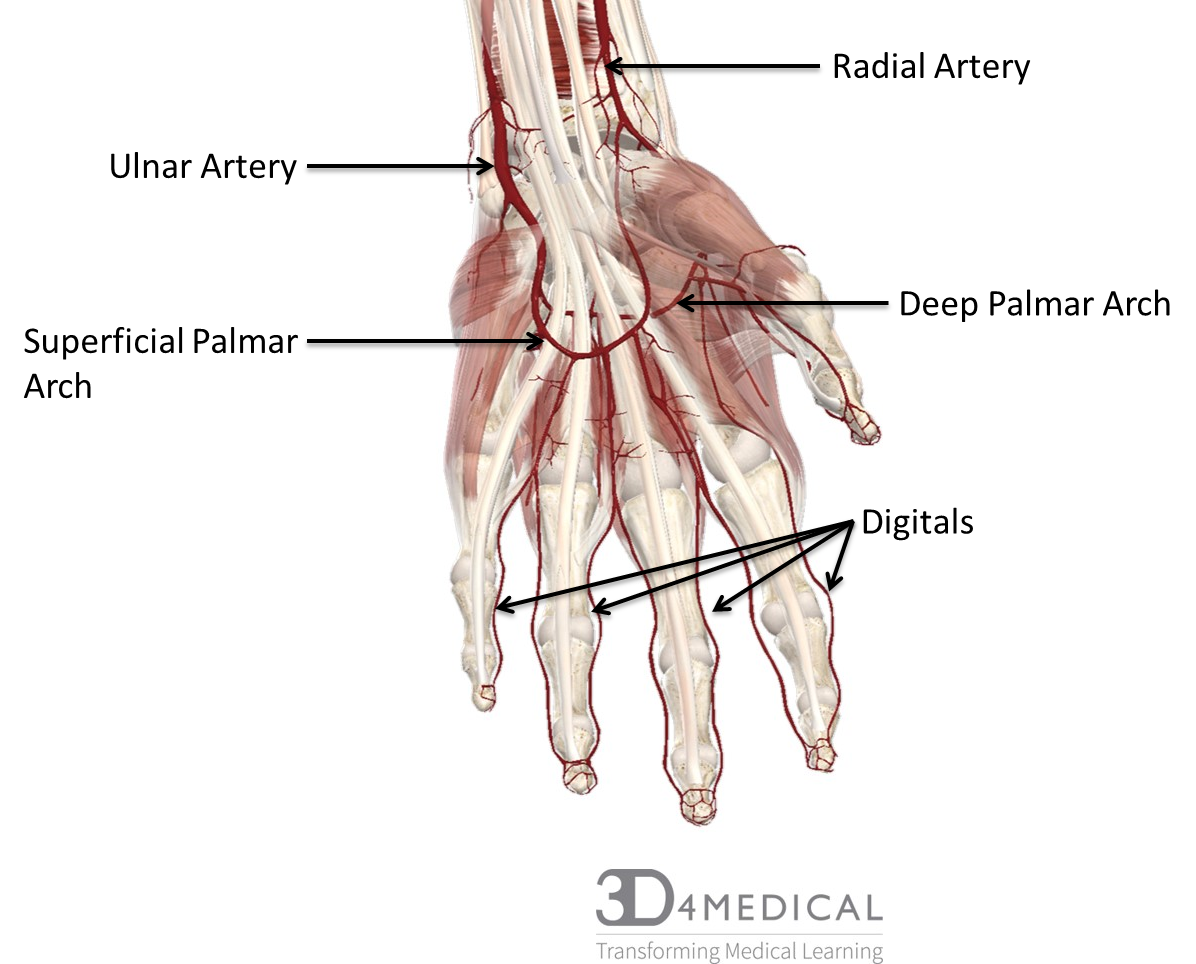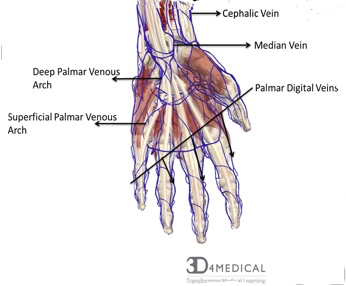Upper Limb
Nerves, Blood Vessels and Lymph
Blood and Nerve Supply of the Forearm
Nerves– for more information on which muscles these nerves supply reference muscles above.
Median Nerve-this is the major nerve in the anterior compartment of the forearm.
Ulnar Nerve-supplies muscles on the median surface of the forearm and the medial side of the hand.
Radial Nerve-divides into superficial and deep branches.
Arteries-The Brachial artery splits into the two major arteries of the forearm, which are the Radial and Ulnar arteries, named by the bone they follow. The Ulnar and Radial arteries branches off into many other arteries supplying blood to the elbow, forearm, wrist, and hand.
Veins-The major veins of the forearm are the Cephalic vein, Basilic vein, Ulnar vein, and Median Antebrachium vein. These veins are responsible for returning blood from the forearm back to the heart. There are also many superficial veins that are visible and important for clinical purposes.

Vascular Supply of the Wrist and Hand
The major vessels that supply the wrist and hand are the ulnar and radial arteries. The blood supply to the deep flexor and extensor muscles of the forearm is supplied via the ulnar artery which divides into anterior and posterior interosseous arteries. The radial artery supplies the muscles on the medial side of the forearm, as well as the index finger and thumb – this is palpable on the anterior surface of the wrist. The radial and ulnar arteries merge at the palm to form the superficial and deep palmar arches; and, from the palmar arches, digital arteries branch towards the fingers. On the dorsal side of the wrist, there is another merger of these arteries that of which forms the carpal arch; the branches from the carpal arch run distally along the metacarpal bones.


Nerve Supply of the Wrist and Hand
The ulnar, median, and radial nerves are the major terminal branches of the brachial plexus that provide motor and sensory innervation to the wrist and hand. The ulnar nerve innervates the ulnar portion of flexor digitorum profundus, flexor carpi ulnaris, and most of the intrinsic muscles of the hand. This also provides cutaneous sensation to half of the fourth finger and fifth finger on both the palmar and dorsal sides. The median nerve actually innervates the majority of the flexors of the wrist and hand, as well as the flexor muscles in the lateral side of the palm. The median nerve provides cutaneous sensation to the skin on the dorsum of the second and third fingers, and the lateral two-thirds of the palm. And lastly, the radial nerve splits into superficial and deep branches distal to the lateral epicondyle of the elbow; the superficial branch supplies skin on the dorsum of the hand, whereas the deep branch innervates most extensor muscles of the forearm.


